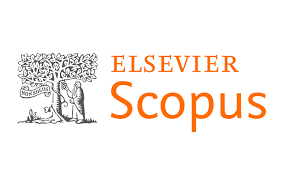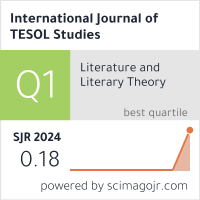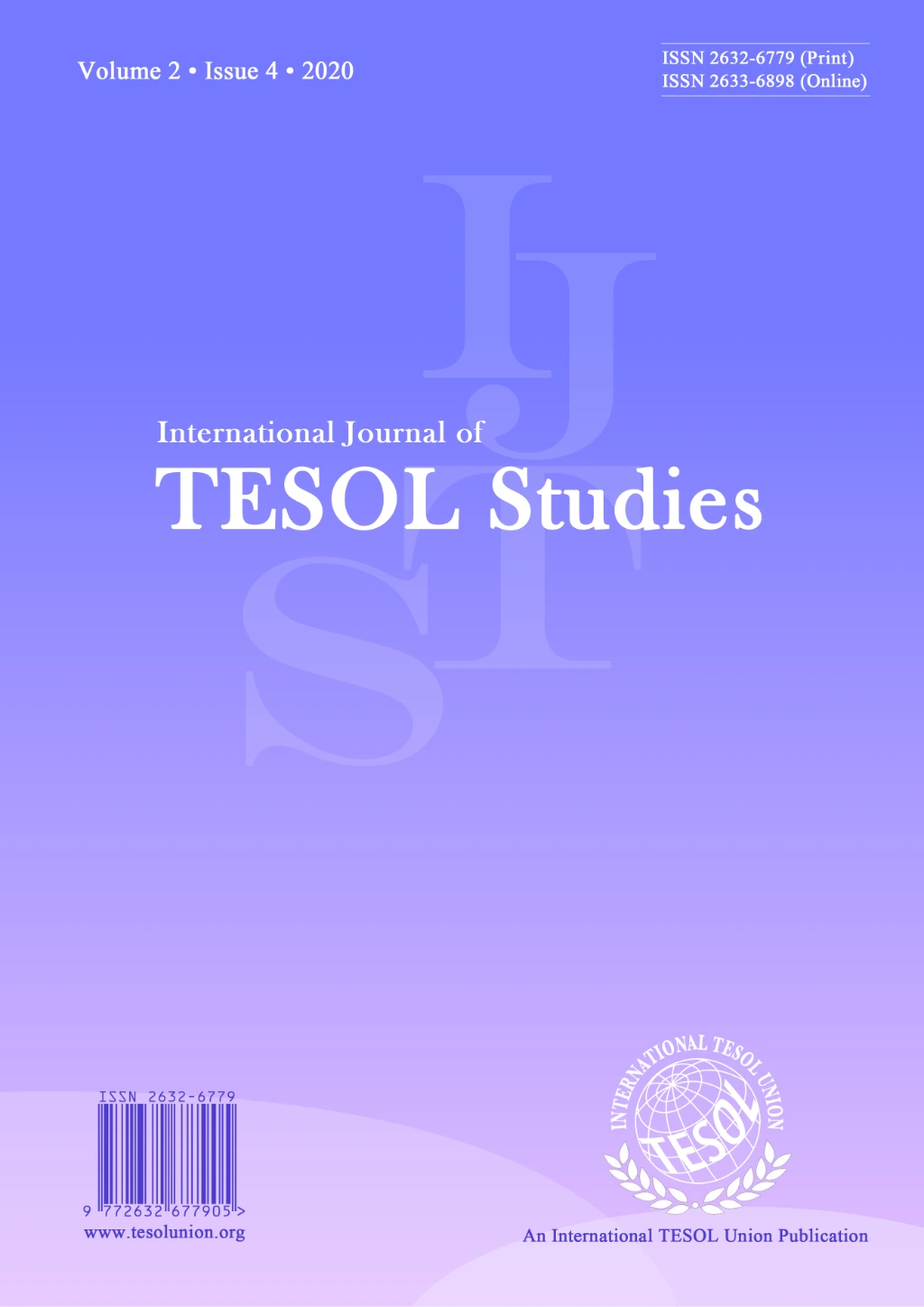2632-6779 (Print)
2633-6898 (Online)


Scopus
Ulrich’s Periodicals Directory (ProQuest)
MLA International Bibliography
MLA Directory of Periodicals
Directory of Open Access Journals (DOAJ)
QOAM (Quality Open Access Market)
British National Bibliography
WAC Clearinghouse Journal Listings
EBSCO Education
ICI Journals Master List
ERIH PLUS
CNKI Scholar
Gale-Cengage
WorldCat
Crossref
Baidu Scholar
British Library
J-Gate
ROAD
BASE
Publons
Google Scholar
Semantic Scholar
ORE Directory
TIRF
China National Center for Philosophy and Social Sciences Documentation
International Journal of TESOL Studies (IJTS) is a fully peer-reviewed international journal published by International TESOL Union and indexed in Scopus (SJR Q1). IJTS publishes both original empirical research and systematic review studies on teaching and learning English as a second and foreign language at all education levels. It is broadly concerned with linguistics applied to education and welcomes contributions in, but not limited to, the following areas:

IJTS is an Open Access journal and all published papers are licensed under the Creative Commons Attribution License 4.0. Users have the right to read, download, copy, distribute, print, search, or link to the full texts of articles in this journal, or to use them for any other lawful purpose. Authors retain copyrights and full publishing rights without restrictions.
There are no article processing charges or submission charges applicable to authors.
Download the full CFP here.
International TESOL Union (ITU) and The Department of English at the School of Humanities and Social Science, Hang Seng University of Hong Kong are pleased to announce that the International TESOL Union Conference on Trailblazing Advances in Applied Linguistics (TAAL) will be held on August 15-16, 2025 in Hong Kong.
The ITU 2025 conference welcomes proposals in all areas of applied linguistics and TESOL. We are particularly interested in innovative and rigorous topics that demonstrate strong methodological and/or theoretical approaches to understand applied linguistics and TESOL. Additionally, we encourage postgraduate students who are nearing completion of their theses to submit proposals as well. Frontline TESOL teachers are equally welcome to participate.
Keynote Speakers
Gavin Bui, The Hang Seng University of Hong Kong
Lixian Jin, City University of Macau
Luxin Yang, Beijing Foreign Studies University
Marina Dodigovic, University of Slavonski Brod
Mark Teng Feng, Macau Polytechnic University
Yuen Yi Lo, The University of Hong Kong
Publication Opportunities
ITU 2025 provides full publication opportunities for all attendees. First, all accepted abstracts will be included in Proceedings of International TESOL Union Conference 2025 (ISBN: 978-1-915835-00-0) published by International TESOL Union.
Second, all submitted full papers, after reviewing, will be included in one of the following three venues:
Note. If you would like to share your research and present, you will need to submit an abstract. If you just want to attend the conference as a general attendee (without presenting), you will not need to submit an abstract. All attendess need to contact info@tesolunion.org to complete registration.
Abstract/Paper Submissions
An abstract needs to be about 300 words and clearly indicates the objectives, methods, and (preliminary) results where appropriate. Format the email subject line as "ITU2025+Author Name" and send the abstracts/full papers to info@tesolunion.org.
Important Dates
Abstract submission due: July 5, 2025
Notification of abstract acceptance: July 8, 2025
Registration Fee (lunch included)
Early bird fee (by July 10, 2025): 100USD/750HKD/700RMB
Regular fee: 150USD/1100HKD/1000RMB
Contacts
All questions about submissions, registrations and other conference-related issues should be emailed to Dr Kevin Liu (info@tesolunion.org), International TESOL Union.